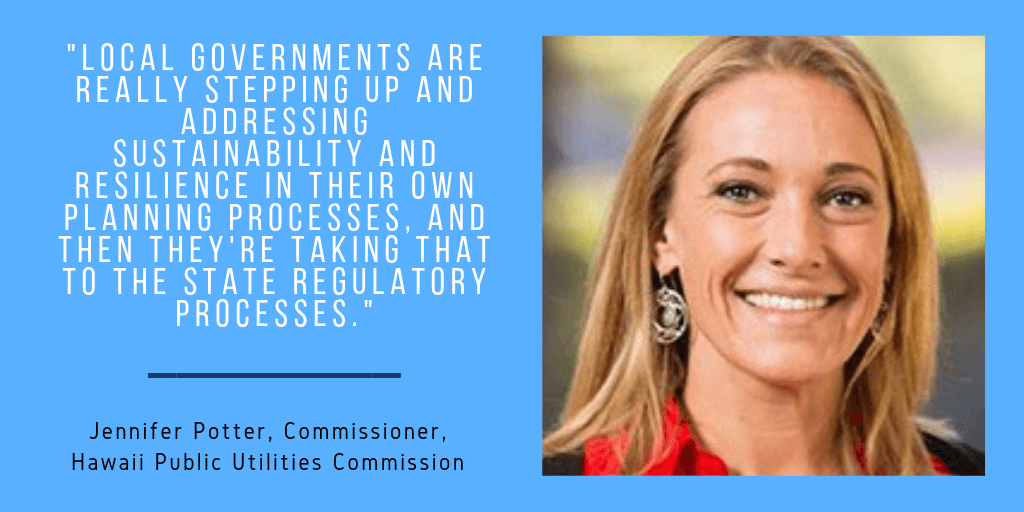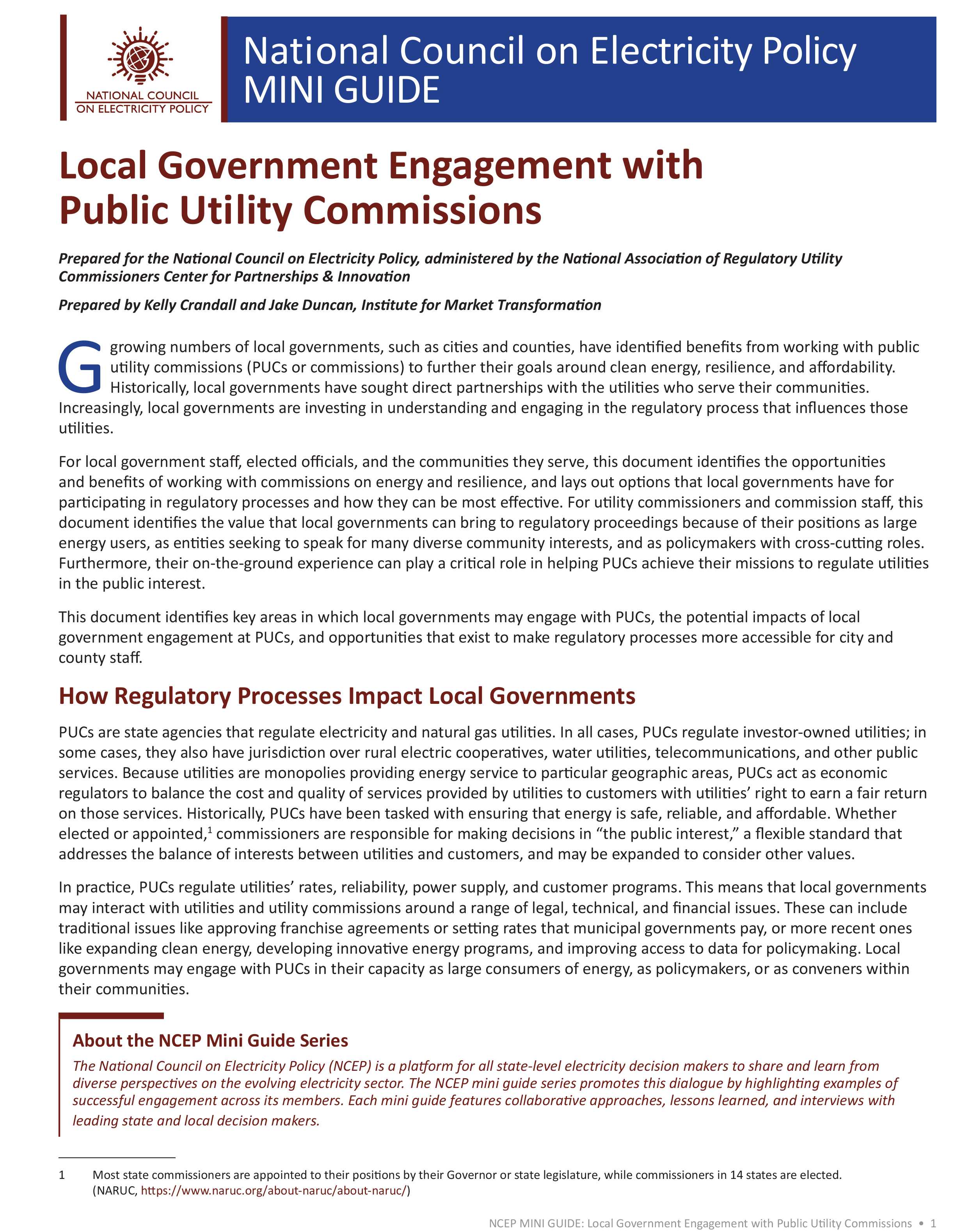Diversity in perspective is key to robust decision-making. Bringing together a robust set of stakeholders to workshop a problem can uncover new solutions that might have not been otherwise identified. This holds true in many areas, but especially in regulatory environments, where affordability, environmental concerns, resilience, public health and safety, and equity of access may all be core to crafting a policy or program.
Public utilities commissions (PUCs) ensure that energy is safe, reliable, and affordable by regulating utilities’ rates, power supply, and services. PUCs are state economic regulators that ensure utilities’ actions are in the public interest. However, PUCs are increasingly recognizing that, in order to be effective regulators, they need greater insights into the downstream impacts of their decisions.
Local governments are stepping up to provide that insight, informed by on the ground expertise and intimate knowledge with local energy needs. Local governments can enhance an electric vehicle (EV) readiness program by providing insight into where chargers would be most utilized due to transit patterns. They are responsible for the welfare of their residents and can highlight the need to prioritize reliability for must-run services like wastewater treatment. Local governments have their finger on the pulse of the community as conveners, policymakers, and service providers.

Finding Common Ground in Resilience
In partnership with the National Association of Regulatory Utility Commissioners (NARUC), IMT interviewed local government staff and commissioners or commission staff in four states—California, Colorado, Hawaii, and Minnesota—to understand the value of the local government voice in regulatory processes and proceedings. The resulting report is part of a series of mini-guides developed for the National Council on Electricity Policy, administered by NARUC.
In a prior blog, we looked at a city perspective to local government-PUC engagement. Here, we take a look at how PUCs can use their local government relations to help achieve the PUC’s mission of regulating in the public interest. The following is an excerpt from IMT’s interview with Commissioner Jennifer Potter of the Hawaii Public Utilities Commission, who discussed how local governments are instrumental in developing resilience, a key topic in the state.
What issues do local governments raise at the PUC?
Jennifer Potter: I think that for all of the counties within Hawaii, resilience is one of the highest priorities. This is in response to many natural disasters that have happened over the last several years, and a recognition of the need to keep grid infrastructure and services—health, fire response, first responders—online during these types of events.
Cities are making connections across resilience and sustainability. Hospitals, schools, and airports have backup generation, but it’s often diesel. Local governments are raising the issue that this creates reliance on transporting barrels of oil. We need to be thinking about how we’re going to supply electricity to those places without it being so reliant on fossil fuels, which we’re trying to wean ourselves off completely.
What do you think is unique about the local government perspective compared to that of other participants in regulatory processes?
Potter: It is important to have local governments involved in proceedings because their infrastructure and their constituents will be impacted by how we decide to evolve the regulatory environment. This includes where we integrate renewables and where we are building. What we incentivize utilities to do will impact local governments’ constituents in the sense of what kinds of service they receive and how resilient and reliable their power is. Local governments are really stepping up and addressing sustainability and resilience in their own planning and processes, and then they’re taking that to the state regulatory processes. They are dealing with issues like pumping water and processing wastewater, which are critical to how our economies operate and how our people live.
How can the PUC encourage local governments to participate?
Potter: For commission staff, it is important to reach out to cities and counties to learn about their priorities. I think that recognizing that they have their own agendas, and understanding how those agendas relate to public utilities, is really important for us in our proceedings. To understand if they have people that are actively involved in the dockets is critical. If they do not, we should figure out why not.
Accessibility and Relationship Building are Key to Promoting Local Government Participation
Local government’s on-the-ground expertise and cross-cutting roles in public health, emergency services, and economic development provide a unique perspective to the regulatory environment. In the case of Hawaii, local governments have been proactive in bringing the issue of resilience to the forefront of PUC proceedings. The new mini guide, produced by IMT for NARUC, provides examples of why and how PUCs are increasingly recognizing the value of bringing in the local government perspective.
While there are actions local governments can take to improve their scope of engagement, Commissions themselves can promote local government activity at the PUC. Key actions include creating clear, accessible websites, closing the knowledge gap through educational sessions, building relationships, making meetings more accessible via location or remote access, and hosting informational meetings or working groups.
Leveraging the diversity of perspectives at hand, particularly the key voice of local governments, promotes effective and inclusive action from Public Utility Commissions. For more insights on how several PUCs across the U.S. are approaching this, access the full mini guide, Local Government Engagement with Public Utility Commissions, here.

